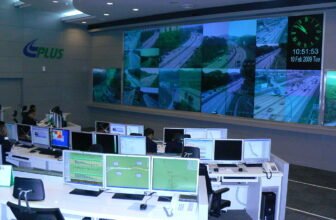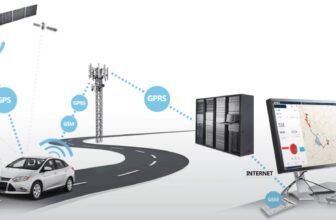
What is Satellite Technology?
Satellite technology refers to the use of man-made satellites to transmit data, perform scientific research, and provide a wide range of services to support modern life. Satellites are complex systems that orbit the Earth or other celestial bodies, enabling communication, navigation, environmental monitoring, and more. Since the launch of the first artificial satellite, Sputnik, in 1957 by the Soviet Union, satellite technology has become indispensable to numerous industries and scientific disciplines.
At its core, satellite technology involves three key components:
- The Satellite: The actual device, which can vary greatly in size, weight, and purpose. Satellites may be geostationary, staying in a fixed position relative to the Earth, or they may follow other orbits, such as polar or low Earth orbits.
- Ground Stations: Facilities on Earth that control and communicate with satellites. Ground stations transmit commands to satellites and receive data, such as images or signals, for further processing.
- The Communication Medium: Radio waves or lasers are typically used to transmit data between satellites and ground stations.
Satellites play a crucial role in daily life, supporting applications like GPS navigation, weather forecasting, internet connectivity, and defense systems. Their versatility has driven innovation across sectors such as telecommunications, healthcare, and agriculture.
Latest Studies About Satellite Technology
Recent advancements in satellite technology have focused on enhancing capabilities, reducing costs, and addressing emerging global challenges. Below are some notable areas of study and breakthroughs:
1. Miniaturization and Small Satellites (SmallSats and CubeSats)
Researchers have been developing smaller, cost-effective satellites that can perform complex tasks. SmallSats, including CubeSats, weigh less than 500 kilograms and are used for scientific research, Earth observation, and communication. Studies highlight:
- Cost Efficiency: The reduced size and weight lower launch costs significantly, enabling more organizations, including startups, to access space.
- Swarm Technology: Networks of small satellites working collaboratively can provide better coverage and data redundancy.
2. Satellite Constellations
Constellations like SpaceX’s Starlink and Amazon’s Project Kuiper aim to provide global internet coverage. Recent studies focus on:
- Inter-satellite Communication: Using lasers to enable faster data transmission between satellites.
- Environmental Concerns: Mitigating space debris from large constellations.
3. Advanced Remote Sensing
Satellites equipped with hyperspectral imaging and synthetic aperture radar (SAR) are providing unprecedented detail in Earth observation. Applications include:
- Disaster Management: Real-time monitoring of wildfires, floods, and earthquakes.
- Agricultural Insights: Monitoring crop health and soil moisture to improve yields.
4. Quantum Communication
Quantum satellites are being studied for secure communication, using the principles of quantum mechanics to transmit data with unparalleled security. Recent developments include:
- Entanglement Distribution: Ensuring data remains secure even if intercepted.
- Practical Applications: Future-proofing global communication networks against cyber threats.
5. Space-Based Solar Power
The concept of harvesting solar energy in space and transmitting it to Earth is gaining traction. Researchers are exploring:
- Microwave and Laser Transmission: Efficiently transmitting energy over long distances.
- Sustainability Potential: Offering a renewable energy source unaffected by weather or daylight hours.
Future of Satellite Technology
The future of satellite technology is poised to revolutionize industries and address global challenges. Emerging trends and possibilities include:
1. Next-Generation Internet Connectivity
Satellite constellations are expected to bridge the digital divide by providing high-speed internet to remote and underserved areas. Innovations include:
- 5G Integration: Enhancing mobile connectivity by integrating satellite networks with terrestrial 5G systems.
- Low Latency Solutions: Improving real-time applications like online gaming and telemedicine.
2. Climate Monitoring and Environmental Protection
Satellites will play an increasingly vital role in combating climate change by monitoring greenhouse gas emissions, deforestation, and ocean health. Future advancements may include:
- AI-Powered Analysis: Automating data processing to identify trends and predict environmental changes.
- Advanced Sensors: Providing more accurate and detailed environmental data.
3. Space Exploration and Colonization
Satellite technology will support humanity’s exploration of the Moon, Mars, and beyond. Contributions include:
- Lunar and Martian Communication Networks: Establishing reliable links between Earth and extraterrestrial colonies.
- Asteroid Mining: Enabling resource extraction from celestial bodies to support space colonization.
4. Artificial Intelligence (AI) and Machine Learning (ML)
AI and ML are expected to transform satellite operations by:
- Automated Decision-Making: Allowing satellites to self-correct and optimize their performance.
- Enhanced Data Analysis: Processing vast amounts of data from Earth observation and scientific missions.
5. Sustainability in Space
As the number of satellites increases, managing space debris and ensuring long-term sustainability will be critical. Innovations include:
- Active Debris Removal: Using robotic arms or nets to capture and deorbit space debris.
- Eco-Friendly Satellites: Designing satellites with biodegradable materials and end-of-life disposal systems.
6. National Security and Defense
Future satellites will play a pivotal role in global security, offering:
- Real-Time Surveillance: Monitoring geopolitical hotspots.
- Cybersecurity Enhancements: Protecting communication networks from cyber threats.
Challenges and Ethical Considerations
The rapid development of satellite technology also raises challenges and ethical questions:
- Space Debris: Addressing the growing risk of collisions and debris in orbit.
- Privacy Concerns: Balancing surveillance capabilities with individual privacy rights.
- Regulatory Frameworks: Developing international laws to govern satellite operations and mitigate conflicts.
Satellite technology is a cornerstone of modern civilization, driving innovation, connectivity, and exploration. Recent studies and advancements are pushing the boundaries of what satellites can achieve, from securing quantum communications to addressing climate change. As we look to the future, sustainable practices and collaborative efforts will be essential to harness the full potential of this transformative technology while navigating its challenges responsibly. image/pexels




